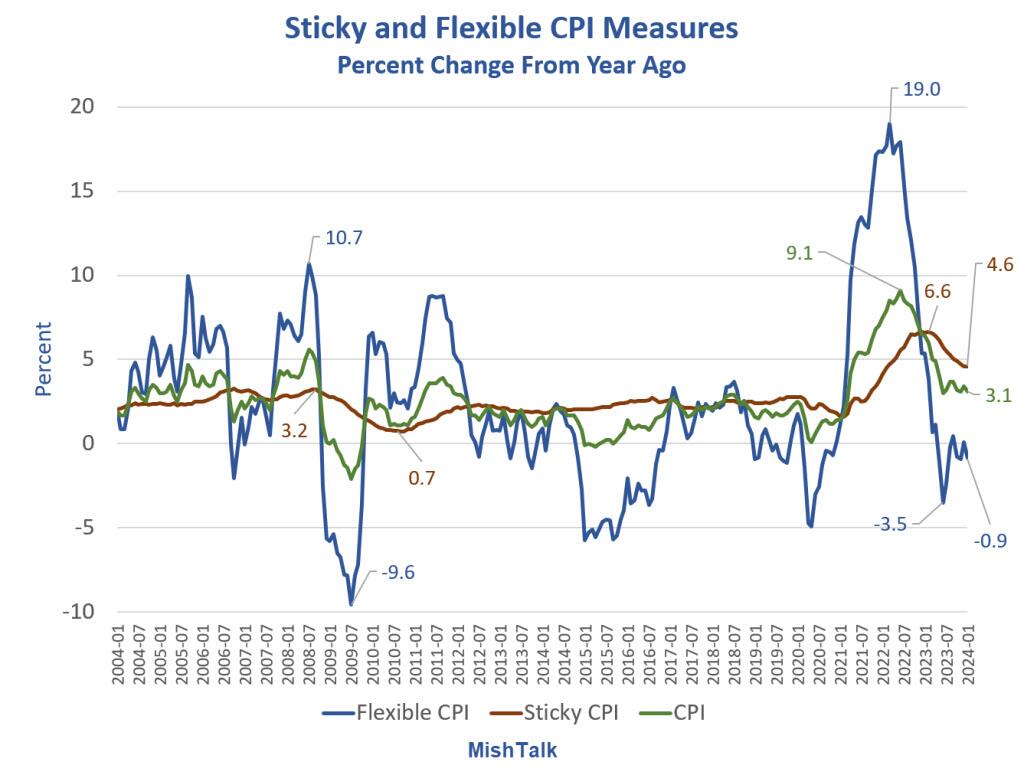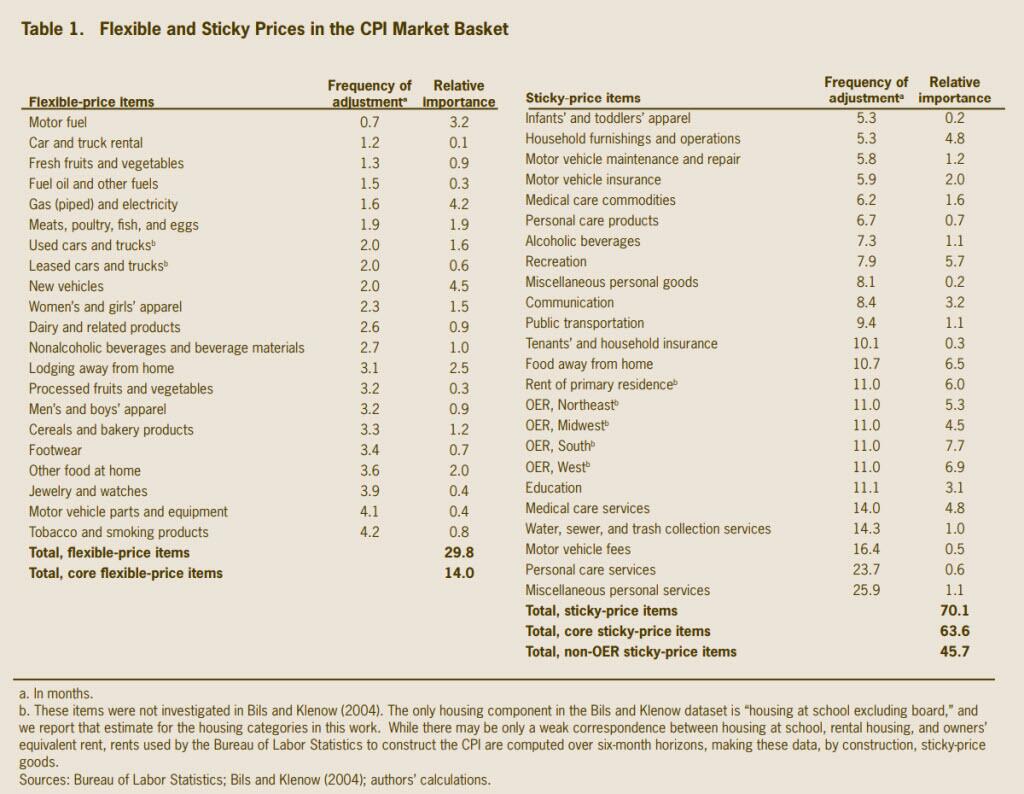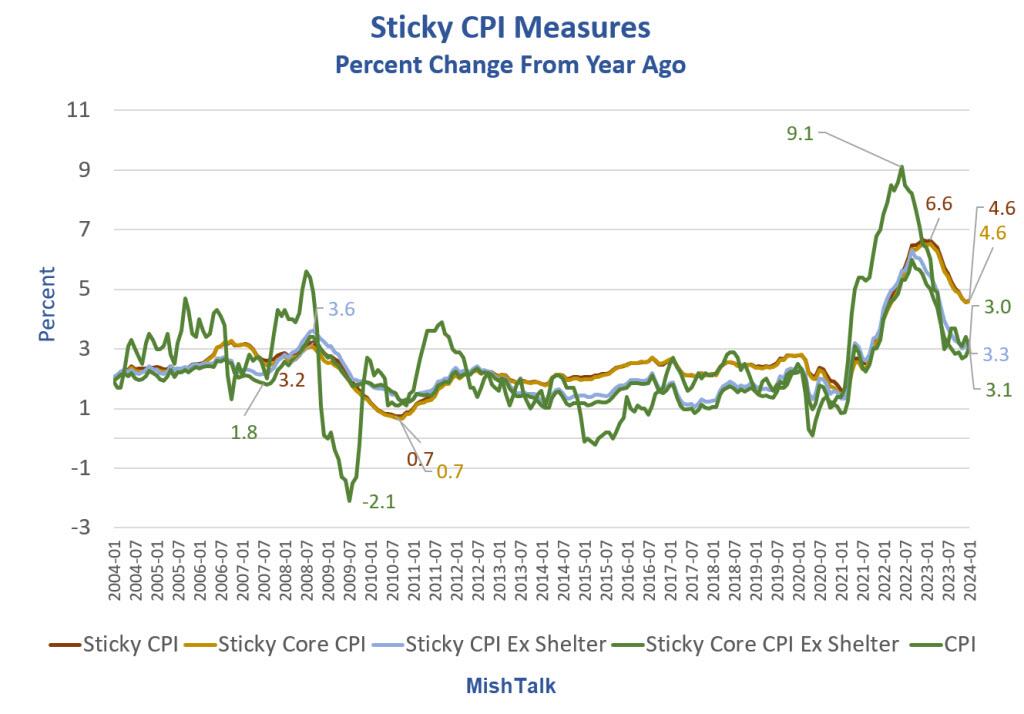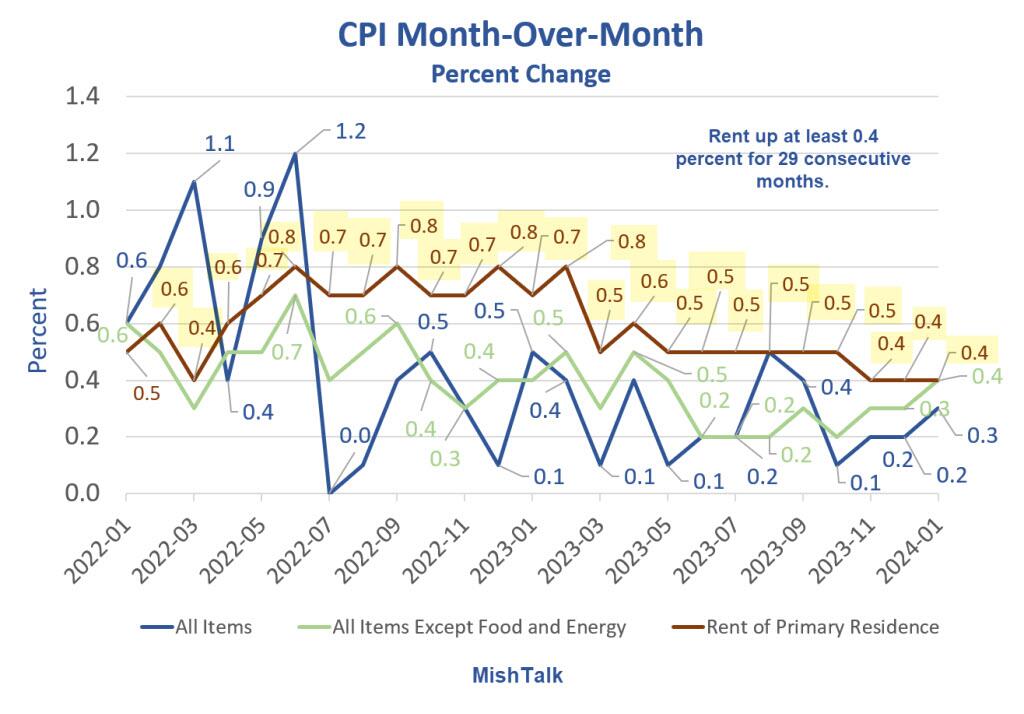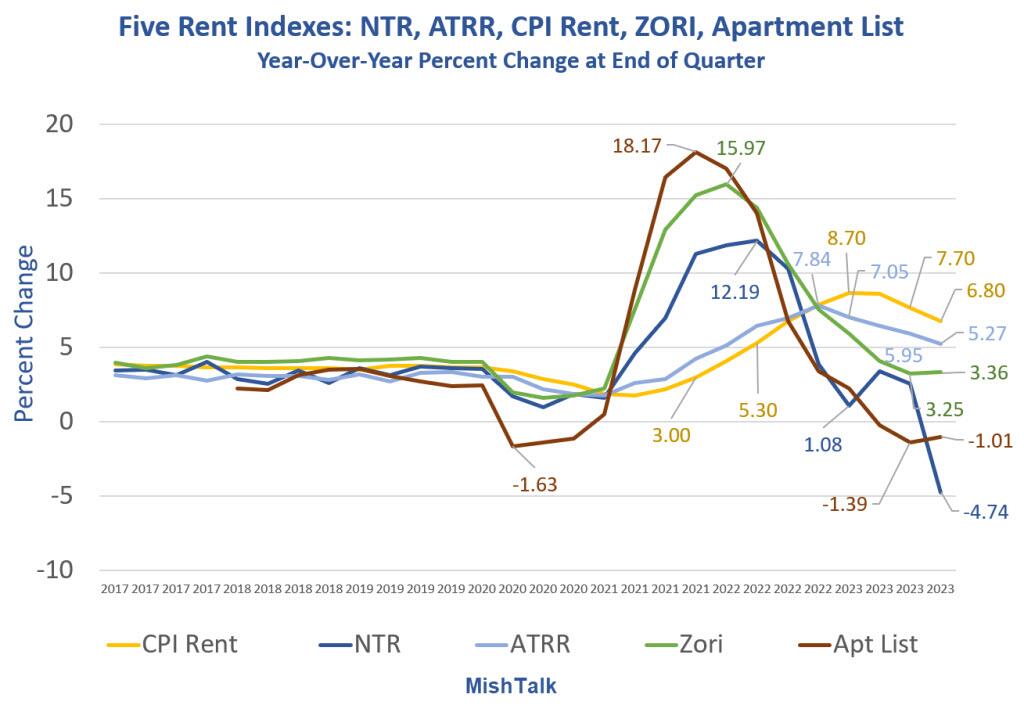70% Of The CPI Is Sticky, Including Rent, Insurance, Food Away From Home
By Mish Shedlock of MishTalk
Some prices change frequently, notably gasoline. Most of the CPI changes infrequently. This post takes a look at the Atlanta Fed Sticky price project.
The Sticky-Price CPI from the Atlanta Fed is published on the same day the BLS posts the regular CPI. This is the first time I have taken a close look at the idea.
Flexible and Sticky Prices in the CPI Basket
Are Some Prices in the CPI More Forward Looking than Others?
The Atlanta Fed asks Are Some Prices in the CPI More Forward Looking than Others? We Think So.
Like it or not—and there are many in the “not” camp—the workhorse for forecasting medium-term inflation is the expectations-augmented Phillips curve, variations of which are sometimes called New Keynesian Phillips curves.
In this Commentary, we use the published components of the CPI to compute two subindexes, a sticky-price composite of the CPI and a flexible-price CPI. We believe the evidence indicates that the flexible-price measure is, in fact, much more responsive to changes in the economic environment— slack—while the sticky-price variant appears to be more forward looking.
What makes a price sticky? The answer to this question has puzzled economists since John Maynard Keynes built his General Theory around sticky prices more than 70 years ago. The prevailing belief is that, in some markets, changing prices can involve significant costs. These costs can greatly reduce the incentive of fi rms to change prices.
Count me in the “not” category on the Philipps curve which has repeatedly been proven as nonsense in Fed studies. As for what makes prices sticky, the authors miss the obvious: Think 12 month leases. Food away from home is another easy one. Restaurants don’t want to change menus every three days, something that gas stations can do easily.
Some would dispute the forward looking claim on the basis rent is a lagging indicator due to the way the BLS smooths things.
For over two years people have been expecting rent to fall and it hasn’t. However, the price of new leases as opposed to renewals are showing price pressures especially in overbuilt markets like Austin, Texas.
Sticky CPI Measures Percent Change From Year Ago
The Sticky CPI and Core Sticky CPI are nearly identical. This makes sense given the respective weights are 70.1 and 63.6.
Sticky CPI excluding shelter has been tracking closely to the overall CPI but that is not always the case.
Where the overall CPI heads will largely depend on rent and Owners Equivalent Rent (OER). The Atlanta Fed weighs the combined Rent and OER categories as 30.4 percent of the CPI.
Those in the rent is lagging camp suggest rent is lagging and they will be right eventually.
OK rent is lagging. But tell that that to the cash strapped renter who sees this chart.
CPI Month-Over-Month
For the 29th consecutive month rent was up at least 0.4 percent. Shelter, a broader category, rose 0.6 percent. Food rose 0.4 percent. Let’s compare the CPI rent of primary residence with four other measures.
What’s Really Going on With Rent? Five Measures to Compare
The rent will soon drop advocates missed the mark for years by placing too much emphasis on the ZORI (Zillow Observed Rent Index), Apartment List, and NTR (new tenant rent) indexes.
All three are measures of new leases although new leases only constitute about 9 percent of the market. Renewals are 91 percent of the market. Apartment list is further skewed by not factoring in seasonality.
The Change in Trend is Sticky
The year-over-year weakening of the CPI and the Sticky CPI is partly due the fact that the change in trend is itself sticky. However, the price of gasoline appears to have bottomed and perhaps food prices have too.
If so, some of the benefit of lower year-over-year trend in rent may get chewed up by a rise in flexible CPI components.
Finally, for the next few months, the year-over-year comparisons are a bit harder to beat. So even if the monthly rent measures ease from the 0.40 percent 29 month-over-month trend, there may not be much of an improvement in the year-over-year measures.
Nothing suggests the Fed will be cutting soon.
NEVER MISS THE NEWS THAT MATTERS MOST
ZEROHEDGE DIRECTLY TO YOUR INBOX
Receive a daily recap featuring a curated list of must-read stories.



